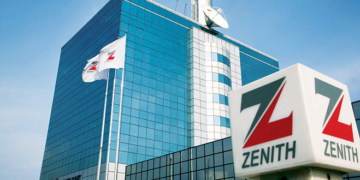World Bank’s latest Global Economic Prospects report has shown that the Russian invasion of Ukraine has magnified the slowdown in the global economy, which is entering what could become a protracted period of feeble growth and elevated inflation.
The World Bank said the crisis which now compounds the damage from the COVID-19 pandemic raises the risk of stagflation, with potentially harmful consequences for middle- and low-income economies alike.
The group also said that surging food and fuel import bills could reverse recent progress in poverty alleviation across Sub-Sahara Africa, especially in Nigeria, Democratic Republic of Congo, where vulnerable populations are sizable, and dependence on imported food is high, Benin, Comoros, The Gambia, and Mozambique.
According to the Bank, “risks to the outlook are predominantly to the downside as growth is expected at 3.7 per cent in 2022 and 3.8 per cent in 2023 – on par with January projections. Yet, excluding the three largest economies, growth was downgraded by 0.4 percentage point both in 2022 and 2023.
“It said that although elevated commodity prices would underpin recoveries in extractive sectors, in many countries rising inflation would erode real incomes, depress demand, and deepen poverty.”
According to the bank, global growth is expected to slump from 5.7 percent in 2021 to 2.9 percent in 2022— significantly lower than 4.1 percent that was anticipated in January, and expected to hover around that pace over 2023-24, as the war in Ukraine has disrupted activity and investment, with trade in the near term and pent-up demand fading, and fiscal and monetary policy accommodation withdrawn.
As a result of the damage from the pandemic and the war, the level of per capita income in developing economies this year will be nearly 5 percent below its pre-pandemic trend, the Bank said in the report that was released yesterday.
World Bank Group President David Malpass said, “The war in Ukraine, lockdowns in China, supply-chain disruptions, and the risk of stagflation are hammering growth. For many countries, recession will be hard to avoid.
“Markets look forward, so it is urgent to encourage production and avoid trade restrictions. Changes in fiscal, monetary, climate and debt policy are needed to counter capital misallocation and inequality,” he said.
The June Global Economic Prospects report offers the first systematic assessment of how current global economic conditions compare with the stagflation of the 1970s — with a particular emphasis on how stagflation could affect emerging market and developing economies.
The Bank said the recovery from the stagflation of the 1970s required steep increases in interest rates in major advanced economies, which played a prominent role in triggering a string of financial crises in emerging market and developing economies.
Growth in LICs was revised down by almost a full percentage point this year as food price inflation and food shortages are expected to take a particularly severe toll on vulnerable populations, further worsening food insecurity in those countries. A prolonged disruption to global trade in cereals and fertiliser due to the war in Ukraine would significantly worsen affordability and availability of staple foods across the region. In addition, insecurity and violence pose a threat to the outlook, especially in
“Fiscal space, already constrained by high levels of public debt, could narrow further if spending pressures to curb the impact of rising food and fuel prices continue to build up. Finally, persistent domestic inflation could speed up monetary policy tightening, escalating stagflation risks across the region,” the bank said.





